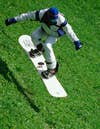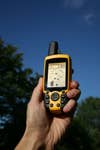The world is full of mysteries, and we at Popular Science strive to
do our part to help you make sense of them. What causes Slurpee-induced
brain freeze? Will junior1s piano lessons make him smarter? Can men produce
breast milk? We’ve covered these important bases and more to help you become
the hit of the next cocktail party and your friends1 go-to expert on the
most curious parts of life. Launch the photo gallery to learn the answers to
20 questions that have always made you scratch your head. Because sometimes
you just need to know.
Want our resident experts to tackle a scientific mystery? E-mail your
questions to fyi@popsci.com . We’ll get right on it.
Q: Why do cellphones turn people into such crummy drivers?
A: Activities such as driving and being aware of your surroundings (a.k.a. âa’¬not being a jerkâa’¬) have a few things in common: Both are complicated tasks that require the brain´s full attention, and both are often sidelined as we overwhelm our frontal lobes´ processing power with the ultra-distracting cellphone. âa’¬Multitaskingâa’¬ is a term that originally referred to a computer´s ability to execute several commands concurrently. Naturally, we assume our brains can do the same thing. But many researchers agree that our alleged modern ability for gaming, downloading, texting, and talking simultaneously is just a myth. Technically, our big human brains can´t even do two things at the same time without paying a price. The multitasking myth, says cognitive researcher Jordan Grafman of the National Institute of Neurological Disorders and Stroke, stems from the ability of part of the frontal lobe to toggle back and forth among simple tasks in as little as a few hundred milliseconds and among complex tasks in only a few seconds. It may seem like doing two things at once, but even these tiny lapses create delayed response times that can lead to car accidents. What´s more, Grafman says, the frontal lobe is also responsible for your ability to observe and reflect on your surroundings. Cellphones degrade this ability because of their extra demand on your brain (which probably explains why people on the street bray into their phones, despite your giving them the evil eye). Finally, according to a recent University of Utah study, phoning while driving doubles the likelihood of rear-ending the car in front of you, even if you´re using a hands-free headset – the lack of visual cues, compared with just speaking to a passenger, is too taxing.
Q: Do you use more energy when you´re thinking really hard?
** A:** Need to lose some flab? Sit your big butt down with a math book-and feel the burn. The human brain is a 24-hour workhorse. While you´re thinking, millions of neurons fire messages back and forth to each other and to the various tissues in the body. These neurons need fuel, consuming a full 75 percent of the blood sugar from the liver and 20 percent of the body´s total used oxygen. Here´s how your neurons feed: Astrocytes-the cells near the capillary walls in your brain-suck energy-rich glucose from the bloodstream and convert it into a form that the neurons can soak up. The neurons then use it to fuel the production of neurotransmitters and, eventually, conscious thought. âa¬The more energy an area of the brain wants, the more glucose that part of the brain will break down,âa¬ explains neurologist Harry Chugani of the Children´s Hospital of Michigan. âa¬So yes, if you´re thinking really hard and really struggling with your thoughts, the neurons in the frontal lobes of your brain will be burning a lot more glucose.âa¬ Simply to survive, your brain requires a tenth of a calorie per minute. Compare this with a walk to the doughnut shop, when your body burns approximately four calories a minute. Kickboxing zaps 10 calories a minute. And when you´re hunched over a crossword puzzle? Your brain is blasting through a respectable 1.5 calories a minute. Pass the Cheetos.
Could aliens trace our TV signals back to Earth?
The French think so. In September, that country´s Center for National Space Studies teamed up with the ARTE Channel to broadcast a program called Cosmic Connexion on French TV-and into space. They beamed the signals toward Errai, a star system that lies 45 light-years away and warms a Jupiter-size planet. The first-ever show targeted specifically at extraterrestrials features a man and a woman wearing only a layer of white paint and guiding potential viewers through a three-hour presentation of all things earthly, such as music videos and cartoons. No one can say how extraterrestrials would interpret the nude twosome-the couple is an allusion to a naked man and woman depicted on a plaque affixed to NASA´s Pioneer spacecraft in 1972-or whether they would be able to view the transmission at all. But assuming that intelligent beings in the Errai system have developed technology similar to ours by the time the signal arrives in 2051, it wouldn´t be difficult for them to locate the origin of the strange broadcast. Even after traveling 45 light-years, the TV broadcast´s radio signals would still be quite strong compared to the natural radio waves bouncing around the cosmos, according to Frank Drake, founder of SETI, the Search for Extraterrestrial Intelligence. âa¬If [the extraterrestrials] have an appropriate radio-telescope system, they can pinpoint on the sky the origin of the signal to extremely high precision.âa¬ Alien astronomers could also study the Doppler shift-the change in frequency as transmitter and receiver move relative to each other-to learn, for example, the size of Earth or the length of our day. Hopefully, the folks in the Errai system are hard at work building sensitive radio telescopes, because âa¬if they don´t know how to do that,âa¬ Drake says, âa¬then we´re not going to find them and they´re not going to find us.âa¬
Q: Does a bland diet really help alleviate heartburn?
A: Anecdotally, yes. Scientifically, no. Lauren Gerson, an assistant professor of medicine at the Stanford University Medical Center, says that none of the common dietary restrictions recommended to lessen heartburn-including limiting coffee, chocolate, caffeinated beverages, wine and citrus fruits-have stood up to scientific scrutiny. Heartburn occurs when the ring of muscle between the esophagus and the stomach that regulates food traffic fails to close properly. This can allow stomach contents, including stomach acid, to leak back into the esophagus, causing a burning sensation. Before the 1980s, when prescription âa’¬proton-pump inhibitorsâa’¬ such as Prilosec and, later, Nexium were introduced, patients had to rely on feeble antacids or even surgery. Diet restriction seemed to be the best noninvasive alternative to lessen the symptoms. When Gerson´s patients complained to her about their bland diets, she decided to go straight to the source-the original studies that implicated diet in the first place-to see if there was any support for the strict limitations imposed on heartburn sufferers. After slogging through more than 2,000 peer-reviewed journal articles, she concluded that there was not. Although some foods (like carbonated beverages) were shown to cause the muscle between the esophagus and stomach to relax-a potential cause of heartburn-Gerson says, researchers never demonstrated whether consuming them would create the symptoms or if eliminating them from one´s diet would lessen discomfort. Blanket recommendations to cut out large classes of food may not be the answer to curing heartburn, but old ideas about diet are not completely obsolete, says Kenneth R. DeVault, chair of the gastroenterology division at the Mayo Clinic in Jacksonville, Florida. âa’¬If something gives you symptoms,âa’¬ he says, âa’¬then you should probably avoid it.âa’¬ Chalk one up for anecdotal evidence.
Q: Can men produce breast milk?
A: In fact, yes. Cases are rare, though. The impetus for milk production begins in the pituitary gland, a pea-size organ on the underside of the brain. Normally, the pituitary churns out signals that keep our bodies functioning and producing the correct types and levels of hormones. But oh, the horrors that may befall the man whose pituitary gland starts misbehaving. âa’¬This gland is susceptible to disease, just like any organ in the body,âa’¬ says Charles F. Abboud, who specializes in endocrinology at the Mayo Clinic in Rochester, Minnesota. One of the side effects of a wonky pituitary can be the production of a pregnancy hormone, prolactin, a compound that encourages the breast tissue to produce milk. For most men, extra prolactin would shut off the reproductive system, limiting their ability to produce sperm. In a select few, however, it can also lead to, as Abboud delicately puts it, âa’¬unusual breast secretions.âa’¬
Q: What is the most powerful laser in the world?
A: When it reaches full operation in 2009, the National Ignition Facil-ity (NIF) beamline will put other, piffling lab lasers to shame. The NIF system will be 60 times as energetic as Nova (which generated 16 trillion watts), NIF´s predecessor at Lawrence Livermore National Laboratory and the previous record holder. But achieving such intensity won´t come easy. The hardware and electronics that power the NIF laser require a space bigger than a football stadium. Now, for the numbers that make the hearts of laser nerds sing. On final approach, 192 laser beams will zing into a million-pound target chamber 33 feet in diameter, with 20-inch walls. To prevent any radiation from escaping, the chamber is encased by walls that are six feet thick. Each 20-nanosecond laser burst will blast target materials in the chamber with 500 trillion watts of power – 1,000 times the electrical output of the entire U.S. over the same period of time. All that awesome power will be used in fusion research, in astrophysics (for example, studying what conditions might be like at the center of Jupiter), and in generating thermonuclear detonations for weapons research.
Do beautiful people always have beautiful babies?
The children of movie stars might inherit their parents´ wealth and enviable connections, but they´re not guaranteed to get the sizzling good looks. A recent study suggests that the reproductively fittest members of a species-which roughly translates to the sexiest-might actually produce the least fit offspring. It seems the genes that drive mating behavior, called âa¬sexually antagonisticâa¬ genes, are to blame. Though beneficial to the mating success of one sex, one of these genes can squash the reproductive chances of the other, explains Alison Pischedda, who was a graduate student at Queen´s University in Ontario when she led the study. If highly fit males pass on sexually antagonistic masculine traits to their daughters, or fit females pass sexually antagonistic feminine traits to sons, Pischedda found, the offspring will be less successful in finding mates for themselves. Surprisingly, the children of parents that were considered the most beautiful of each sex-the study looked at fruit flies, but yes, some flies are more attractive than others- were the least fit of all the mating pairs. Although scientists don´t know exactly how these genes work in humans, the study offers an explanation for how a beautiful couple might produce unattractive offspring. âa¬Consider facial features,âa¬ Pischedda says. âa¬If you have a masculine, square jaw, which is handsome in a man, that´s not very beautiful in a daughter.âa¬
Why does orange juice taste so bad after I brush my teeth?
Taking a swig of orange juice soon after using toothpaste can fill your mouth with a taste so awful, you´d swear you just licked an anvil. But toothpaste doesn´t ruin the flavor of all foods and drinks, so what makes O.J. so unpalatable? Scientists have identified the culprit as sodium lauryl sulfate, a foaming detergent found in most toothpastes. This chemical helps clean teeth, but it also interferes with the taste cells on our tongue, explains Linda Bartoshuk, a professor at the University of Florida College of Dentistry. Each taste cell has an outer membrane that contains flavor receptors. The detergent temporarily collapses the membranes and disrupts some of the receptors, skewing our sense of taste. âa’¬There are three things you normally detect in the taste of orange juice: sour, sweet and a note of bitterness,âa’¬ says physiologist Jon DeSimone of Virginia Commonwealth University, who collaborated with Bartoshuk a decade ago on the definitive study on orange juice and toothpaste interaction. Sodium lauryl sulfate appears particularly adept at dulling the receptors for sweetness, and thus blocking the taste of fructose, the sugar in orange juice. For some reason, toothpaste doesn´t seem to interfere with the taste buds that detect sour and bitter flavors. Usually, the citric acid elicits a slight sour flavor, but without tasting fructose, the sour is enhanced and the acid´s strong bitterness becomes shockingly obvious. To date, researchers haven´t explored what´s happening at the cellular level, but DeSimone thinks there´s no real scientific incentive for going much further: âa’¬You just have to remember to drink your orange juice before brushing.âa’¬
Q: Do music lessons make kids smarter?
A: Several studies published in the past few years involving children ages four to 15 have strengthened the theory that music lessons have a positive effect on kids´ brains. The first, by the Chinese University of Hong Kong, looked at 90 boys between the ages of six and 15; half were in the school´s string orchestra, and the rest had no musical training. Another study, by the University of Toronto, enlisted 144 six-year-olds and randomly assigned them to a year of piano lessons, voice coaching or nothing. The researchers discovered that lessons on a musical instrument can boost mathematic ability and overall IQ. Unsurprisingly, the longer a student sticks with it, the greater those improvements. Most recently, scientists at McMaster University and the Rotman Research Institute in Toronto revealed that as little as four months of music lessons cause noticeable improve- ments during brain development. The study followed a handful of four- to six-year-old aspiring musicians over the course of a year, measuring patterns of neuronal activity in each participant´s brain. When the scientists compared the young Mozarts with a control group, they found that music students´ brains were developing differently. For example, instruction improved an information-processing area of the brain associated with attention. Unlike their peers, the nascent musicians´ general memory capacity (measured by how easily subjects could memorize strings of numbers) increased over the course of the year. Before you start kicking yourself for having given up the tuba, take comfort: Even quitters reap some benefits. Studies have shown that instead of losing their abilities wholesale, children who stopped their lessons retain some of the skills engendered by their musical training.
Q: Will wind farms mess up the weather by interfering with storms and wind?
A: Only if you´re a cornstalk. Computer models of atmospheric physics suggest that very large wind farms-far larger than exist today-could affect the climate, but only directly underneath the turbines. The ground temperature below a 10,000-turbine farm might rise by about 1.3
Q: How do quartz watches tell time so accurately?
A: The intricate cogs and gears inside watches are, for the most part, a thing of the past. Modern watches are far simpler as a result of a curious property of quartz called piezoelectricity: When jolted with an electrical current, a quartz crystal vibrates at a very specific frequency. Quartz has been used in larger, laboratory clocks since 1927, but it was not introduced in commercial form until the second half of the 20th century. âa’¬After World War II, watchmakers realized that they had basically hit the limit [of accuracy] with mechanical watches,âa’¬ says Carlene Stephens, curator of the division of work and industry at the Smithsonian National Museum of American History in Washington, D.C. The big challenge for watchmakers was creating a quartz crystal that was small yet vibrated at a relatively low frequency, because interpreting high-frequency vibrations hogs battery power. Researchers chose 32,768 hertz because this equals 215 vibrations per second, a number that is easily converted using a digital counter. To get the whole thing going, electricity from the watch battery induces the quartz to vibrate. These very regular vibrations are then âa’¬countedâa’¬ by the internal circuitry and converted into a signal that, depending on the type of timepiece, drives either the second hand of an analog watch or the counting circuit in a digital watch.
Do cellphones kill sperm?
Cellphones have been getting bad press for years. First there were the unfounded brain-cancer rumors. Then came evidence linking usage with higher stress levels and dangerous driving. Now a new study claims that the devices are doing serious damage to male fertility. Scientists at the Reproductive Research Center at the Cleveland Clinic sampled 361 men and found that the more time the men spent on their cellphones each day, the lower their sperm count. On the face of it, the results are alarming. Men who used their cellphones for more than four hours daily had a sperm count 41 percent lower than those who never used them, according to the researchers. Even guys using their phones for just two hours a day saw their troops reduced by 20 percent. The mechanism by which the damage occurs is fuzzy, says study leader Ashok Agarwal. One possibility is that the electromagnetic radiation that cellphones emit-during a call as well as at rest-might affect the region of the brain responsible for initiating testosterone production. A greater likelihood is that radiation- producing phones-often clipped to a belt or kept in a pants pocket by men who use their phones heavily-affect developing sperm; independent studies have shown that radio waves of similar frequencies to those emitted by cellphones can damage sperm´s DNA. But don´t put on the lead underpants just yet. The study didn´t control for age, stress or other contributing factors, and most fertility doctors wouldn´t consider the sperm-count levels of even the big talkers to be clinically abnormal. âa¬I haven´t stopped using my phone,âa¬ says Andrew La Barbera, scientific director of the American Society for Reproductive Medicine. âa¬To prove the cause and effect is going to be hard,âa¬ admits Agarwal, who is conducting a more stringent follow-up study. âa¬Perhaps those who are using a cellphone many hours a day should keep it away from their body.âa¬
Q: How loud is it inside the International Space Station?
A: Surprisingly loud – the result of pumps and fans that circulate air throughout the station. Current noise levels on the ISS, which has been in orbit since 1998, are between 55 and 69 decibels, the equivalent of a normal conversation and a vacuum cleaner, respectively. NASA has been working to lower noise levels (its goal is 50 to 55 decibels) through various muffling methods, including vibration isolation and acoustic paneling on walls, and by replacing old fans with more efficient models. The efforts are paying off: In the past, the ISS averaged 10 decibels louder. What do the noise levels on the ISS mean for the astronauts who spend six months or more on board? On Earth, noise levels under 85 decibels are considered acceptable in the work environment. There is no standard for continuous exposure beyond the eight-hour workday, however. And there´s no way to get away from the noise on the ISS, short of wearing NASA-supplied earplugs or noise-canceling headphones 24/7. Apart from a recent Russian news-service article mentioning diminished hearing, there are no hard data available. Although NASA won´t comment on its astronauts´ health, its noise-reduction efforts speak for themselves.
Q: How can I send something to space on the cheap?
A: For more than a decade, private companies have been happy to let you pay them to launch your personal payload into space. The good news is that the cost of room on both orbit- and suborbit-bound rockets has already plummeted, with prices now ranging from $500 a pound on a craft of Interorbital Systems in California to $200 a pound on the Russian Shtil-3A rocket. Bigelow Aerospace offers a flat fee of $295 per golf- ball-size item. And if you can wait a couple more years, your launch will be even cheaper. Masten Space Systems in Santa Clara, California, just announced its âa’¬SodaSats to Spaceâa’¬ program, due to begin as early as 2008. For a mere $99, you will be able to send any object of your choosing – maybe the ashes of a loved one, maybe some cell cultures – 62 miles into space and back as long as it weighs less than a pound, fits into a soda-can-size canister, and is not narcotic, radioactive or explosive. The company´s optional pressurized containers will even allow clients to send something that´s alive, as long as it´s hardy enough to survive the trip (bacteria, for example). But in order to qualify for the live-specimen option, you have to be doing a scientific experiment, explains Masten vice president Michael Mealling: âa’¬You just can´t send your cat up in space to flail around in zero G.âa’¬
Q: Why do I feel sleepy after I eat?
A: The glucose from food causes your body to reduce production of orexins, a class of proteins that is believed to keep us alert. Orexin-producing neurons, which are found in the hypothalamus region of the brain, have been known since 2003 to be affected by glucose levels, but it wasn´t known to what extent those levels-and the subsequent suppression of orexins-interfere with alertness. In June, Denis Burdakov and his fellow researchers at the University of Manchester in England reported that even a small increase in blood-glucose levels significantly lowers the orexin-mediated neuron activity in the brain, causing sleepiness. The strong dependence of alertness on glucose levels was surprising, although, Burdakov says, the discovery makes perfect evolutionary sense. âa’¬It would be advantageous for animals to stop energy-expending behaviors after they obtained their food, in order to make the calories last as long as possible,âa’¬ he explains. But all foods are not created equal. According to Burdakov, meals rich in carbohydrates or fats elevate blood-glucose levels and make you more tired; meals higher in protein are less likely to have that effect. So if you want to make it through the workday without nodding off at your desk, eat some meat for lunch.
Q: What happens when we hallucinate?
A: Although most of us immediately think of a Fear and Loathing in Las Vegas experience, or perhaps that weird guy muttering to himself on the street corner, recreational drugs and psychiatric disorders are not the only causes of hallucination. Stress, fever, illness or sleep deprivation can also trigger an episode. Hallucination, also called sensory deception, happens when a person sees, hears, feels, smells, or tastes something that is not there. The general cause is abnormal chemical reactions, triggered by a drug or by misfiring neurons, that activate certain parts of the brain and disrupt their usual functions. The exact nature of hallucinations is poorly understood, but here´s what we know: With visual hallucinations, foreign chemicals (drugs or stray neurotransmitters) enter the synapses between the optic nerve and the occipital lobe, the part of the brain that processes visual information, triggering a signal on that neural pathway. Once the false signal reaches the brain, the occipital lobe is activated, and visual hallucination occurs. The same process occurs with hallucinations related to hearing, smell, taste (in the temporal lobes) and touch (in the parietal lobe). If you wish to experiment (legally, mind you) with some hallucination of your own, try sleep deprivation. According to Michael Golder, a professor of psychiatry at George Washington University, âa’¬a person who has been sleep-deprived for 72 hours is as susceptible to hallucinations as someone taking LSD.âa’¬
Q: Is the rock-concert lighter salute bad for the environment?
A: First, for the uninitiated, an explanation of the lighter salute: You´re at a concert. The music slows, the first guitar wails of a power ballad begin, and hundreds of disposable lighters illuminate the audience like so many sequins on a vest. Three or four (or 10, if it´s a particularly long solo) minutes later, the song ends, and you pocket the Bic and get back to headbanging. But fear not, âa’¬Free Birdâa’¬ devotees. Lighting up en masse isn´t all that bad for the environment. The butane in disposable lighters is a compound made up of carbon and hydrogen; as it burns, these elements combine with oxygen to produce carbon dioxide and water vapor. A typical lighter releases about 237 milligrams of carbon dioxide per minute. If 1,000 Night Ranger fans burned their lighters during the entirety of âa’¬Sister Christian,âa’¬ they would collectively release about 1.2 kilograms of CO2. Compare that with the 12,200 kilograms a typical power plant produces in a minute. In fact, if you were to give a one-minute salute with each of the 1.46 billion lighters that Bic sells annually, the amount of CO2 you´d create would equal only 28 minutes of said power plant´s emissions. So salute those ballads fearlessly, and rock on.
Q: Why do I get a headache when I eat ice cream too quickly?
A: âa’¬Brain freezeâa’¬ or an âa’¬ice cream headacheâa’¬ hits when a cold substance makes contact with nerve endings in the roof of your mouth. A particular nerve in the back of your throat (impress your friends by calling it the sphenopalatine ganglion) stimulates the trigeminal nerve, the largest of the sensory nerves that lead from your face to your brain. The result is that characteristic stabbing pain, centered in the midfrontal part of the brain. Migraine sufferers are typically susceptible to cold-induced headaches, and a 10- or 20-second brain freeze can often be a trigger for a longer, more severe migraine attack. There´s really no way to avoid such headaches if you insist on wolfing down your icy dessert, says Seymour Diamond, founder and director of the Diamond Headache Clinic in Chicago. Next time you sip a Slurpee, just remember to take it slow.
Q: Why do people sometimes call sunlight â€vitamin Dâ€?
A: You need activated vitamin D3, also known as calcitriol, for the maintenance of proper blood chemistry and healthy bone tissue. You can get the vitamin from supplements, but it´s way cheaper (not to mention more pleasant) to make it the old-fashioned way-by going outside and soaking up some rays. The concept is basic enough: A compound in the skin reacts with ultra-violet light from the sun to produce vitamin D precursor molecules. Two carbon atoms in the previtamin then spontaneously rearrange to create the bone-bulking vitamin D3. This all happens quickly; after just a few minutes in the sun, the body has absorbed enough light to produce several times the necessary daily intake of the vitamin. And what if you don´t get enough vitamin D? If you´re a kid, rickets. If you´re an adult, adult rickets. Time to bust out the sunglasses.
Q: Can I make snow with just my garden hose?
A: Sorry, Jack Frost, but setting your puny garden hose to âa’¬mistâa’¬ when it´s cold outside isn´t going to turn your frozen lawn into a sledding hill. Why not? The problem, in a word, is dirt. Natural snow forms in the upper atmosphere when tiny water droplets adhere to ice crystals or a small speck of dust and then change from supercooled liquid water to solid ice. These crucial dust and ice âa’¬nucleationâa’¬ points are missing from your DIY snow venture, says Matthew Pittman, co-founder of snow-machine manufacturer SnowatHome in Connecticut. âa’¬Just spraying water in a freezing environment won´t make snow,âa’¬ he explains. âa’¬The water will not freeze until it makes contact with the ground.âa’¬ Professional snow-making machines, which use a proprietary blend of nucleation particles, suck up 150 gallons of water a minute to keep the slopes of your favorite ski resort covered with the white stuff. A typical garden hose spews out a paltry six gallons a minute. So even if you did manage to get your water droplets to form snowflakes before they hit the ground, all you could hope for is a very slow accumulation, and the smallest snowman ever.
Q: Why do mosquitoes seem drawn to me like bees to watermelon, while they couldn´t care less about my wife?
A: There´s some uncertainty about the je ne sais quoi that makes one person more appetizing than the next to a blood-hungry insect – but the âa’¬favoritesâa’¬ phenomenon is more than suburban legend. âa’¬The people who get bitten the most are the people producing the most carbon dioxide,âa’¬ says University of Florida mosquito authority Jonathan Day. But there´s more to it than CO2. âa’¬If they were just attracted to carbon dioxide, they would go for cars,âa’¬ Day says. Perfume, body heat and exercise-induced lactic acid can all turn a mosquito on to her meal. (Only female mosquitoes drink blood. Males get by on fruit juice and nectar.) The sex hormone estradiol is also a mosquito magnet. Although women have more estradiol than men, any bite resistance guys have is canceled out by their higher body mass, which produces more CO2. The best way to avoid being dinner is to ditch the cologne and keep your metabolism flatlined.
Q: Why does the corpse flower smell so bad?
A: The better to gross you out, my dear. That distinct scent, somewhere between rotting pumpkin and decaying animal carcass, plays an important evolutionary role for the corpse flower, Amorphophallus titanium. âa’¬The plants have learned to mimic those smells for the sake of attracting pollinators,âa’¬ says Ernesto Sandoval, the curator of the University of California at Davis´s Botanical Conservatory and proud caretaker of Tammy, Tommy, Ted and Tabatha, the resident grotesques. The corpse flower, more formally known as titan arum, has found its peculiar evolutionary niche in appealing to flies and carrion beetles. (The titan arum is one of many species of flowers and fungi that use the smell of death to lure carrion-eating pollinators.) If all goes the corpse´s way, sometime during the few days the plant blooms every two years, pollen will rub off on curious insects, which will then fly on to other titan arum plants in the area. For help making sure their smell gets around, the flowers crank up the heat. Through a process called mitochondrial uncoupling, the corpse flower (which can grow up to nine feet high) takes the energy produced through photosynthesis and, instead of using it to make food, releases the energy as a form of heat. This extra heat-the tip of the plant can become as hot as 100
Q: If we built a space elevator, would it mess up Earth´s orbit?
A: Not enough to lose sleep over. The space elevator – a permanent structure to economically transport material into space – would extend along a ribbon from an oceanic platform on the equator to an 800-ton counterweight 62,000 miles above the Earth´s surface. Every time the elevator´s âa’¬carâa’¬ ascended with a 15-ton payload, the extended mass would increase the length of an average day by a femtosecond. (It´s the same idea as when a spinning ice-skater puts his arms out to slow down.) Brad Edwards, an expert on the space-elevator concept and president of X-Tech, a developer of high-strength materials, says it´s hardly something to be concerned about. Contemporary events such as melting glaciers (which move millions of tons of water from the poles to the equator) slow down the Earth´s rotation orders of magnitude more than one trip on a space elevator would. Moreover, the elevator would not affect the Earth´s movement around the sun in the slightest. The only real way to significantly hinder the Earth´s rotation would be to deploy approximately 1 percent of its mass. âa’¬You´re talking about launching something that´s roughly the same mass as the moon,âa’¬ Edwards explains. âa’¬That´s just not going to happen.âa’¬
Q: Can someone use my GPS receiver to track me?
A: Conspiracy theorists can rest easy. Handheld global positioning system (GPS) receivers are just that-receivers. They are passive devices that intercept radio signals sent out by a network of 24 primary satellites in medium-Earth orbit. By timing how long a signal takes to reach the device from each of four satellites, a GPS device can pinpoint the user´s position. For someone to be able to stalk you, your GPS device would have to have some way of transmitting that position data, whether by a GPS-enabled cellphone, a radio transmitter, emergency 911 services or wireless internet. Most simple handheld GPS devices are merely passive receivers and have nothing of the kind. If a GPS device were to be used to track a person without his or her knowledge, it could cross into un-charted legal territory. âa’¬The idea that someone is able to gather a really nicely aggregated picture of your daily routine is something most people would see as an invasion of privacy,âa’¬ says Lee Tien, a senior staff attorney at the Electronic Frontier Foundation, a nonprofit digital-rights group. âa’¬It´s not much different from having someone following you around and keeping track of where you are at all times.âa’¬ If you´re concerned, there´s an easy solution: Just disable the GPS features on your cellphone when you´re not using them.
Is it true a quack has no echo?
For reasons not wholly understood (but most likely involving rumor and mass gullibility), the myth that a duck´s quack has no echo has gained traction over the years. Enough traction, in fact, to prompt an acoustical research team at the University of Salford in England to undertake the definitive study to debunk the legend. The team recorded Daisy the duck in a cathedral-like chamber designed for maximal echo formation and then, as a scientific control to isolate the quack with no echo, in an echoless room with walls covered in fiberglass wedges that absorb all sound. The result: Daisy´s quack did indeed echo in the first room. So why the misguided belief? A duck´s quack, like any other sound, travels in waves. When the waves hit a reflective surface, they bounce back-the echo is the expression of that reverberation. The amount of time it takes for the echo to reach your ears is a function of the distance the sound travels. If, however, the beginning of the reverberation reaches your ears at the same time the original sound is ending, they will naturally overlap, becoming indistinguishable. In the duck´s case, the quack begins softly and ends loudly, so the soft early echo is sometimes drowned out by the louder original end sound (the âa¬aack!âa¬ part). Trevor Cox, who led the Salford team, speculates that this high/low dichotomy is what fed the anti-echo belief in the first place. In fairness, the Salford study isn´t the first. A few years ago, a team from the newspaper column âa¬The Straight Dopeâa¬ tackled the same myth out in the wild, though with slightly less reliance on the scientific method. The researchers simply coaxed a duck to quack (by running with the bird in their arms) in a high-school courtyard and listened for an echo-which, they reported, returned quite clearly.


![The French think so. In September, that country´s Center for National Space Studies teamed up with the ARTE Channel to broadcast a program called Cosmic Connexion on French TV-and into space. They beamed the signals toward Errai, a star system that lies 45 light-years away and warms a Jupiter-size planet. The first-ever show targeted specifically at extraterrestrials features a man and a woman wearing only a layer of white paint and guiding potential viewers through a three-hour presentation of all things earthly, such as music videos and cartoons. No one can say how extraterrestrials would interpret the nude twosome-the couple is an allusion to a naked man and woman depicted on a plaque affixed to NASA´s Pioneer spacecraft in 1972-or whether they would be able to view the transmission at all. But assuming that intelligent beings in the Errai system have developed technology similar to ours by the time the signal arrives in 2051, it wouldn´t be difficult for them to locate the origin of the strange broadcast. Even after traveling 45 light-years, the TV broadcast´s radio signals would still be quite strong compared to the natural radio waves bouncing around the cosmos, according to Frank Drake, founder of SETI, the Search for Extraterrestrial Intelligence. âa¬If [the extraterrestrials] have an appropriate radio-telescope system, they can pinpoint on the sky the origin of the signal to extremely high precision.âa¬ Alien astronomers could also study the Doppler shift-the change in frequency as transmitter and receiver move relative to each other-to learn, for example, the size of Earth or the length of our day. Hopefully, the folks in the Errai system are hard at work building sensitive radio telescopes, because âa¬if they don´t know how to do that,âa¬ Drake says, âa¬then we´re not going to find them and they´re not going to find us.âa¬](https://www.popsci.com/uploads/2019/03/18/IOSCJGP765ZUJQTO74EQTH5CZY.jpg?auto=webp&optimize=high&width=100)







![<strong>A:</strong> The intricate cogs and gears inside watches are, for the most part, a thing of the past. Modern watches are far simpler as a result of a curious property of quartz called piezoelectricity: When jolted with an electrical current, a quartz crystal vibrates at a very specific frequency. Quartz has been used in larger, laboratory clocks since 1927, but it was not introduced in commercial form until the second half of the 20th century. âa'¬After World War II, watchmakers realized that they had basically hit the limit [of accuracy] with mechanical watches,âa'¬ says Carlene Stephens, curator of the division of work and industry at the Smithsonian National Museum of American History in Washington, D.C. The big challenge for watchmakers was creating a quartz crystal that was small yet vibrated at a relatively low frequency, because interpreting high-frequency vibrations hogs battery power. Researchers chose 32,768 hertz because this equals 215 vibrations per second, a number that is easily converted using a digital counter. To get the whole thing going, electricity from the watch battery induces the quartz to vibrate. These very regular vibrations are then âa'¬countedâa'¬ by the internal circuitry and converted into a signal that, depending on the type of timepiece, drives either the second hand of an analog watch or the counting circuit in a digital watch.](https://www.popsci.com/uploads/2019/03/18/HKZGSG6Z5NUBYHVO5CBLDOG3QI.jpg?auto=webp&optimize=high&width=100)













